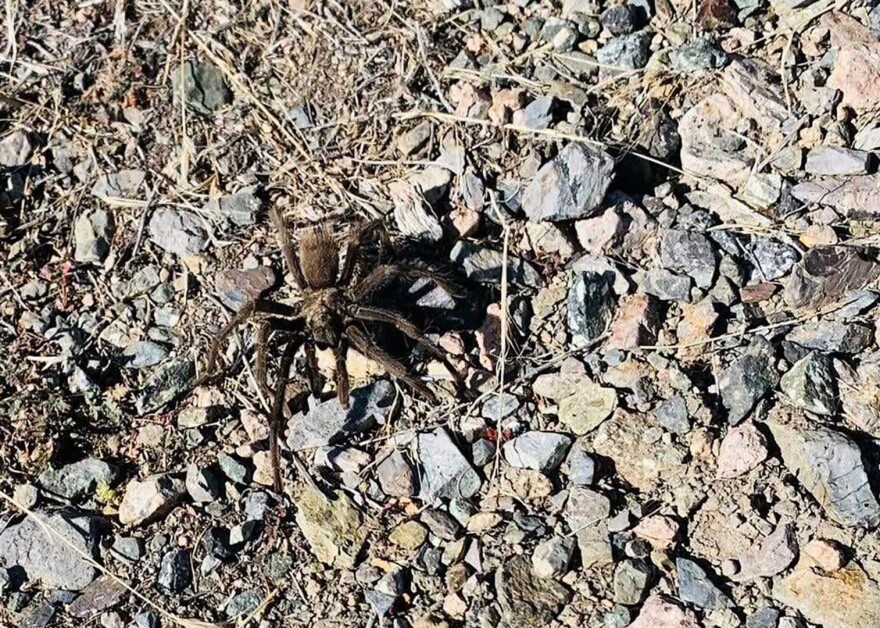Between September and early November, North American tarantulas often outnumber the 100 residents of Gabbs, Nevada.
Dr. Jason Bond, professor of entomology and nematology at UC Davis said the emergence of tarantulas at this time of year is due to mature males going on a deadly search to find a mate. The spiders are not unique to Gabbs. They can also be found across the entire Southwest this time of year.
“So the females tend to have a home burrow from which they hunt,” said Bond. “And the males do that for some time... and then he's going to emerge from his burrow, go out and find a female and then and then he's done. That's it. It’s [the] end of life for him.”
According to Bond males live about five to six years and then die after mating, but the females have long life spans, of 20 or more years. He also shares a spooky fact that doesn’t bode well for the males.
“Spiders are quite often cannibalistic. So she says, ‘Well, I’m not gonna mate with you. But I think I'll go ahead and have you for dinner,’ ” Bond said.
While the idea of a tarantula migration may keep many people far away, spider spectators are known to visit the area to watch the eight-legged bachelors march through the small town and surrounding areas in search of love. Gabbs has embraced this unusual occurrence, adopting the furry spiders as the school’s mascot.

Bond said the critters are up to six inches across and can be found around dusk near roads and trails. Although their venom is not known to be harmful to humans, he said it’s best not to provoke them and to beware of the rash-inducing hairs on their abdomen, which they can shed if they feel threatened.
The spiders will dissipate once the weather gets colder.
Kat Fulwider is a student reporter for KUNR and the Hitchcock Project for Visualizing Science, which is part of the Reynolds School of Journalism.




